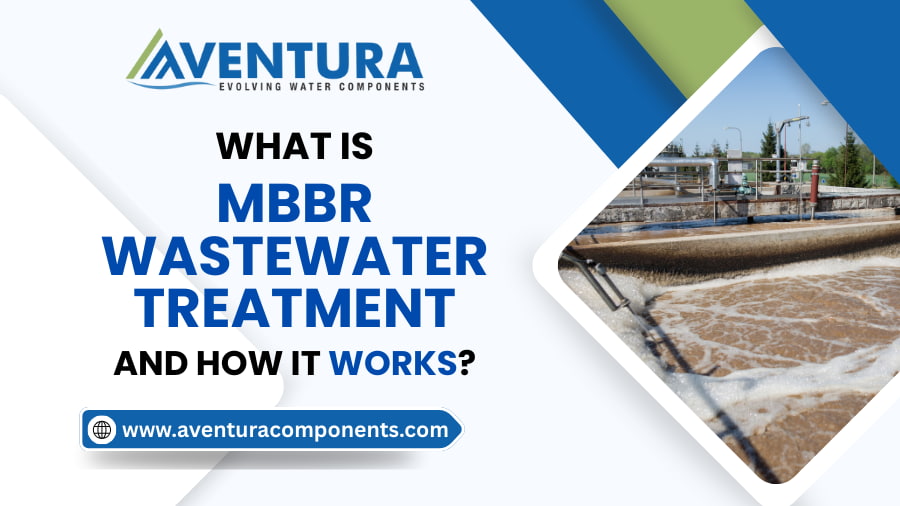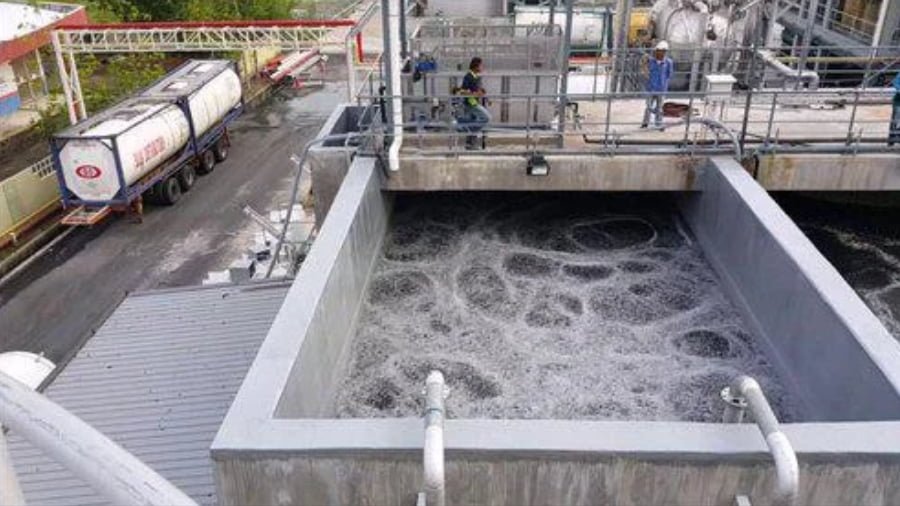
What Is MBBR Wastewater Treatment and How It Works?
Treating wastewater is a big challenge, not only for industries but also for people in the UAE. However, we are already aware that its treatment is a major part of the water cycle, and with a reliable solution, it can provide access to clean and safe water for both commercial and industrial use. Businesses operating in diverse industries that produce large quantities of wastewater must invest in MBBR wastewater treatment solutions.
This advanced technology has completely transformed how wastewater is treated using traditional methods. Not only is this technology faster and more efficient, but it is also eco-friendly, aligning with the Emirates’ goals to secure a greener future. Keep reading to learn more about MBBR wastewater treatment, how it works, and its advantages that make it a popular choice for municipalities and various industries.
Table of Contents
What is MBBR Wastewater Treatment?
The Moving Bed Biofilm Reactor is a modern biological wastewater treatment process. It uses small floating plastic carriers or media, which provide microbes a place to attach, grow, and form a biofilm. The biofilms formed consume and remove organic waste in the wastewater. These carriers constantly move, ensuring contact between microbes and wastewater.
As this improves the cleaning process, you can secure better results. This technology can be easily integrated with many other technologies for more effective wastewater treatment. If we don’t just consider the initial capital investment, MBBR is a much more cost-effective solution, as it helps with long-term cost savings compared to traditional wastewater treatment methods.
Key Components of an MBBR System
Each MBBR system is made with several essential parts that work together to clean wastewater effectively. From providing space for microbes to grow to supplying oxygen, each component plays a significant role. Here are the five key components that will help you understand the MBBR wastewater treatment process easily:
1. Biofilm Carriers or Media
These small plastic pieces move freely inside the treatment tank. These offer a large and safe surface for microbes to attach and grow into a biofilm, which helps in the water cleaning process. These are built to make sure they float evenly in the water without sinking to stay on top. These are usually made from strong plastics like HDPE and are available in small shapes, generally little cylinders.
2. Aeration System
This system gives oxygen to the friendly microbes living on the biofilm. The microbes can’t break down the waste in the water without oxygen. It also creates movement in the treatment tank and keeps the carriers in continuous contact with the wastewater. It also features an air blower and perforated pipes at the bottom that provide oxygen and motion at the same time.
3. Tank or Basin
This is the main container where the biological process of treating wastewater is carried out. This is the most important component, as it holds both floating carriers, and water needs to be provided. The carriers provide enough surface area for microbes to grow and perform their job.
4. Retention Screens
Placed at the outlet of the tank, their main function is to prevent biofilm carriers from exiting the tank while permitting only treated water to flow out freely. These make sure the entire system runs smoothly and no carriers are lost.
5. Settling Tank or Clarifier
This is an optional component of the MBBR wastewater treatment system, and its main function is to remove the residual sludge, offering the treated water a final treatment before it leaves as cleaner water from the system. It makes sure the heavier particles settle at the bottom and only clear water flows out.

How MBBR Works Step by Step
Now that we have learned about the key components of the MBBR wastewater treatment system, let’s discuss how it works. Its working process is simple but highly effective in treating wastewater. Here are the four main steps of this process:
1. Aeration
Firstly, wastewater enters the MBBR tank, which contains floating media. Air is supplied into the tank to provide oxygen to bacteria and gently mix the water. The microbes grow and form a biofilm on moving media. The moving media gives bacteria a surface to grow on, forming a biofilm. The constant movement makes sure every particle of water comes in direct contact with biofilm. The microbes on the biofilm consume the organic waste in water and break it down into simpler substances.
2. Settling
After that, the wastewater comes in a settling phase, where solids separate from the water. MBBR media helps in settling suspended solid particles, making sure only clearer water passes to the next stage.
3. Filtration
In this step, any remaining suspended particles or solids from wastewater are removed through advanced filtration. At the tank outlet, a retention screen makes sure treated water flows out and the media is kept inside. This provides cleaner water available for final treatment.
4. Disinfection
The last step in the MBBR wastewater treatment process is disinfection. This step not only reduces the harmful microbes that can lead to serious health risks and diseases. Usually, chlorine and ozone are used for disinfection. However, some systems also include additional storage to break down and remove the residual organic matter, offering safe water without any impurities.
Benefits of MBBR Wastewater Treatment Process
As we already discussed, MBBR wastewater treatment is becoming a reliable option not only because it fits a simple process but also due to several other benefits. Here are some of the main benefits that make it a better and more preferred choice than traditional and other methods:
1. Compact and Space-Saving
If you work in an environment with limited space, MBBR systems are a perfect option, as they don’t need a lot of space. The floating media inside the system’s tank provide a large surface area for microbes. These can easily treat the same amount of water as traditional systems.
2. Simple to Operate
Another benefit of MBBR is its simple process. Operators don’t need to worry about anything; you just need to check that all the steps in the process are running smoothly.
3. Low Maintenance
Unlike other water treatment systems, they offer reliable performance without the need for extra maintenance like backwashing or sludge recycling. It mainly works on its own, so it doesn’t require much attention for smooth working.
4. Flexible and Resilient
It can easily handle changes in wastewater flow, like a sudden rise in pollutants. The microbes in the media adjust naturally. Moreover, any change in pH, salt levels, and organic load is also managed by the system.
5. Cost Savings
The efficient breakdown of waste ensures the process leads to the production of lower volumes of excess sludge. So, you don’t need to handle its disposal, helping you save costs. The aeration system delivers oxygen to the biofilm, which helps in lower energy consumption.
6. Fast & Effective
The MBBR wastewater treatment process is very fast and effective at cleaning water. The moving media and the large biofilm surface make it possible to remove organic matter and nutrients in just a few hours. So, you don’t need huge tanks or extra steps to meet high demands.
Industrial Applications – Where MBBR is Commonly Used?
As we discussed before, MBBR is not only used to treat municipal sewage, but it can also treat all kinds of wastewater, like from industries and on-site treatment systems. Here are the main industrial applications of this effective wastewater treatment process:
1. Food and Beverage Industry
In this industry, it is used to treat wastewater containing high levels of suspended solids and organic matter (BOD). This process makes sure the pollutants are effectively removed so that clean water is obtained.
2. Textile Industry
This industry produces wastewater containing high loads of dyes and other harmful substances with high organic loads. Even if you run a small textile factory, you can use this process, as its setup doesn’t require much space.
3. Pulp & Paper Industry
This industry also produces a huge amount of water, as nearly 85% needs to be treated on-site. MBBR wastewater treatment technology is a reliable solution for handling wastewater containing high organic contaminants.
4. Chemical Manufacturing Industry
The wastewater from chemical manufacturing processes contains very high amounts of organic pollutants and harmful substances. MBBR helps in its proper treatment and ensures safe treated water is reused in operations or released in natural water bodies.
5. Other Industries
Besides these, this technology is also used in dairies, mining operations, aquaculture, pharma, and other industries.
Partner with Aventura Components for Smarter Wastewater Management
MBBR is a simple but highly effective solution for wastewater management. Not only is it faster and affordable, but it also offers superior results compared to traditional methods. It saves space and can be used in an environment with space limitations. Moreover, it can be easily combined with other modern technologies, like IFAS, for treating wastewater.
Connect with Aventra Components, a trusted provider of advanced wastewater treatment solutions, to secure the best benefits of MBBR technology. We help our clients implement this smarter wastewater management system for different industries. We offer products that are designed to handle large volumes of wastewater reliably and also meet the required environmental compliance standards. Make us your partner for your water treatment projects to get high-value, efficient, and eco-friendly water treatment solutions.
Also Read – Top 10 Water Treatment Companies in Dubai, UAE
